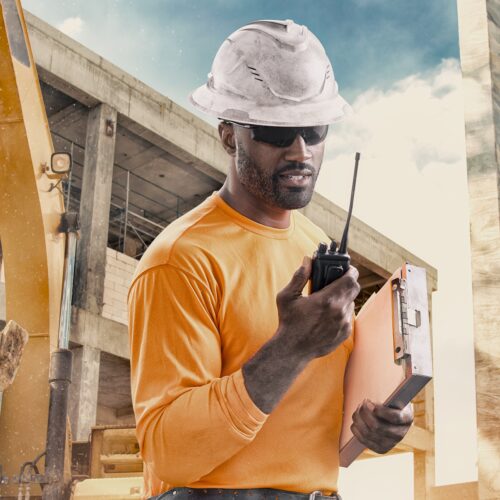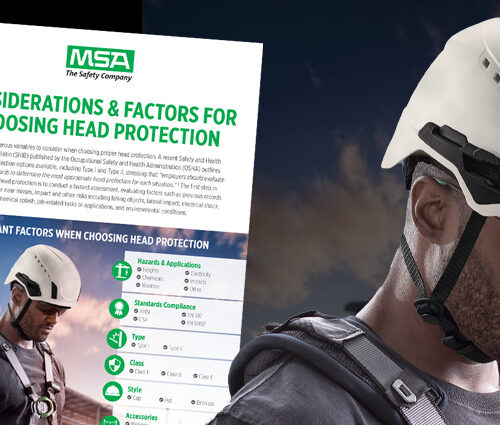
The Occupational Safety and Health Administration (OSHA) announced a proposed rule in July 2024 aimed at helping protect workers from the risks of heat stress. According to the Bureau of Labor Statistics, “there were 33,890 estimated work-related heat injuries and illnesses that resulted in days away from work from 2011-2020, an average of 3,389 per year in that time period.”1
The new OSHA proposed standard, “Heat Injury Illness and Prevention in Outdoor and Indoor Work Settings,” would apply to all employers conducting outdoor and indoor work in all general industry, construction, maritime, and agriculture sectors where OSHA has jurisdiction, with some exceptions.2
While OSHA has had a National Emphasis Program on heat safety since April 2022, this new proposed rule would establish enforceable guidelines and requirements for employers.1
What is Included in the OSHA Proposed Rule on Heat Stress Prevention?
OSHA’s proposed rule on heat stress includes several components designed to help mitigate the risk of heat-related illnesses, including requirements for drinking water, rest breaks, control of indoor heat, and acclimatizing new and returning workers to high heat environments. If finalized, the standard would require that employers develop a Heat Injury and Illness Prevention Plan (HIIPP) to evaluate and help control heat hazards, as well as outline heat emergency response measures as part of the HIIPP.2
Initial Heat Trigger Requirements
The proposal identifies an initial heat trigger of 80°F and high heat trigger of 90°F as “the vast majority of known occupational heat-related fatalities occur above the initial heat index trigger, making it a sensitive trigger for heat-related fatalities.”2
According to OSHA, when employees are exposed to temperatures at or above the initial heat trigger, the following requirements would go into effect:2
- Drinking Water: The availability of suitably cool drinking water in easily accessible locations. Employers would be required to provide access to one quart of drinking water per employee per hour, and should also consider making electrolyte supplement packets available in addition to water.
- Break Areas at Outdoor Worksites: The identification of one or more employee break areas at outdoor work sites that can accommodate the number of employees on break, is readily accessible to the work area(s), and has either shade or air-conditioning if in an enclosed space.
- Break Areas at Indoor Worksites: The identification of one or more area(s) for employees to take breaks (e.g., break room) that is air-conditioned or has increased air movement and, if appropriate, de-humidification, can accommodate the number of employees on break, and is readily accessible to the work area(s).
- Acclimatization: The establishment of measures to help protect new and returning workers to high heat environments. Options may include providing additional breaks during this period or slowly increasing heat exposure during workers’ shifts.
- Effective Communication: Employers should maintain effective, two-way communication with employees and regularly communicate with employees. According to OSHA, “two-way” communication is especially important, as it allows for employees to notify an employer when someone is exhibiting signs and symptoms of heat-related illness.
- Personal Protective Equipment (PPE): While the standard would not require employers to provide cooling PPE, it would require that they maintain the cooling properties of cooling PPE if it is provided.
High Heat Trigger Requirements
OSHA outlines the following additional requirements when the high heat trigger of 90°F, or a corresponding wet bulb globe equal to the NIOSH Recommended Exposure Limit, is met.
These requirements should be considered in addition to those already in effect based on the initial heat trigger. The additional high heat trigger requirements include:
- Rest Breaks: Employers should provide rest breaks at the minimum frequency and duration of 15 minutes every two hours. OSHA clarifies that total time of the rest break would not include the time that employees take to put on and remove PPE or the time to walk to and from the break area.
- Observation for Signs and Symptoms: Employers should implement at least one of two methods of observing employees for signs and symptoms of heat-related illness, with a third option for employees who work alone at a work site. These options may include a mandatory buddy system in which co-workers observe each other; or observation by a supervisor or heat safety coordinator. For employees working alone, the employer should establish two-way communication and make contact with the employee every two hours. Under the proposed rule, employers would be required to train employees on signs and symptoms of heat-related illness and which ones require immediate emergency action.
- Hazard Alert: Employers would be required to issue a hazard alert to employees prior to a work shift or when employees are exposed to heat at or above the high heat trigger. According to OSHA, “a hazard alert will help prevent HRIs by notifying employees of heat hazards, providing information on HRI prevention, empowering employees to utilize preventative measures, and providing practical information about how to access prevention resources (e.g., drinking water, break areas to cool down) and seek help in case of emergency.”2 Employers must also place warning signs at high heat areas at indoor worksites.
Next Steps for the OSHA Proposed Rule
The unofficial version of the “Heat Injury and Illness Prevention in Outdoor and Indoor Work Settings” proposed rule is currently available to view online, and will be published in the Federal Register in the near future. Once published, OSHA encourages the public to submit comments which will be taken into consideration in the development of the final rule.
Solutions for Cooling PPE for Outdoor Jobsites
PPE that does not require the maintenance of add-ons such as ice packs may be beneficial to employers, especially given the requirements outlined in OSHA’s proposed rule. PPE solutions that utilize built-in technology to help reduce heat stress at outdoor worksites, such as the MSA V-Gard C1® Hard Hat, helps keep the inside of the hard hat up to 20°F cooler by featuring the patented Reflect IR® Thermal Barrier to help block the energy from the sun. The V-Gard C1 also features a full brim to help to provide additional shade and sun protection, while strategically placed vents to optimize air flow are an available option.

Explore more features of the V-Gard C1
EXPLORE MORESolutions for Cooling PPE for Indoor Jobsites
For indoor worksites where high heat is a concern, The MSA V-Gard® 500 Vented Full-Brim Hard Hat is designed to help foster air circulation, mitigate excessive heat buildup, and optimize wearer comfort during long shifts. The hard hat features lateral contours for easy integration of hearing protection, and an extended trough for around-the-brim protection on hot and/or wet environments.







